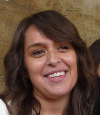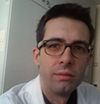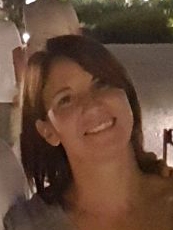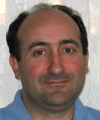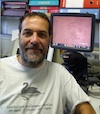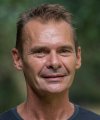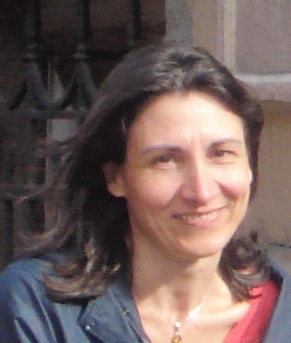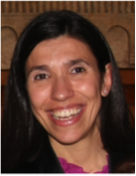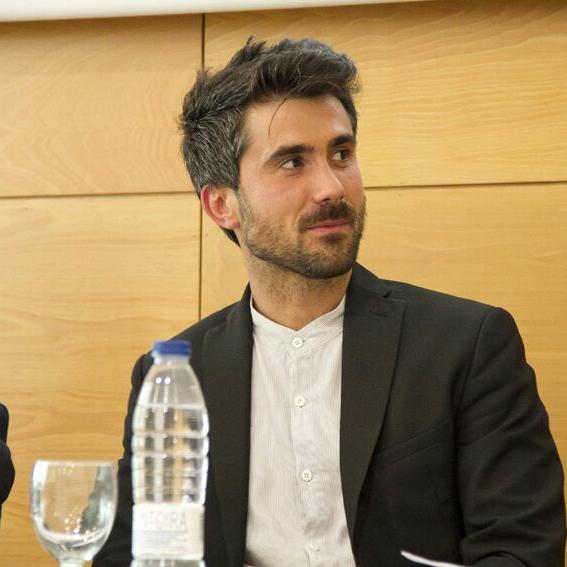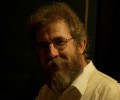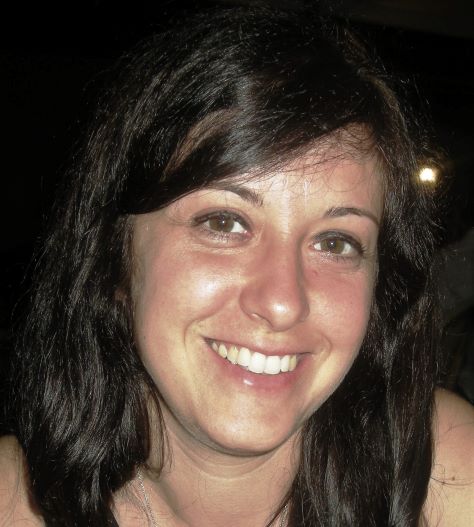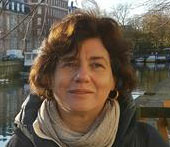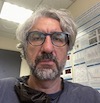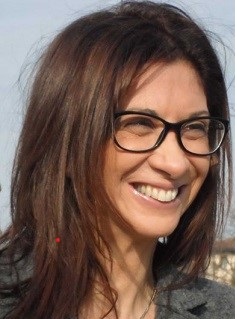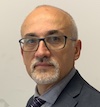Studying at the University of Verona
Here you can find information on the organisational aspects of the Programme, lecture timetables, learning activities and useful contact details for your time at the University, from enrolment to graduation.
Academic calendar
The academic calendar shows the deadlines and scheduled events that are relevant to students, teaching and technical-administrative staff of the University. Public holidays and University closures are also indicated. The academic year normally begins on 1 October each year and ends on 30 September of the following year.
Course calendar
The Academic Calendar sets out the degree programme lecture and exam timetables, as well as the relevant university closure dates..
| Period | From | To |
|---|---|---|
| I sem. | Oct 3, 2016 | Jan 31, 2017 |
| II sem. | Mar 1, 2017 | Jun 9, 2017 |
| Session | From | To |
|---|---|---|
| Sessione invernale Appelli d'esame | Feb 1, 2017 | Feb 28, 2017 |
| Sessione estiva Appelli d'esame | Jun 12, 2017 | Jul 31, 2017 |
| Sessione autunnale Appelli d'esame | Sep 1, 2017 | Sep 29, 2017 |
| Session | From | To |
|---|---|---|
| Sessione estiva Appelli di Laurea | Jul 12, 2017 | Jul 12, 2017 |
| Sessione autunnale Appelli di laurea | Nov 21, 2017 | Nov 21, 2017 |
| Sessione invernale Appelli di laurea | Mar 13, 2018 | Mar 13, 2018 |
| Period | From | To |
|---|---|---|
| Festa di Ognissanti | Nov 1, 2016 | Nov 1, 2016 |
| Festa dell'Immacolata Concezione | Dec 8, 2016 | Dec 8, 2016 |
| Vacanze di Natale | Dec 23, 2016 | Jan 8, 2017 |
| Vacanze di Pasqua | Apr 14, 2017 | Apr 18, 2017 |
| Anniversario della Liberazione | Apr 25, 2017 | Apr 25, 2017 |
| Festa del Lavoro | May 1, 2017 | May 1, 2017 |
| Festa della Repubblica | Jun 2, 2017 | Jun 2, 2017 |
| Vacanze estive | Aug 8, 2017 | Aug 20, 2017 |
Exam calendar
Exam dates and rounds are managed by the relevant Science and Engineering Teaching and Student Services Unit.
To view all the exam sessions available, please use the Exam dashboard on ESSE3.
If you forgot your login details or have problems logging in, please contact the relevant IT HelpDesk, or check the login details recovery web page.
Should you have any doubts or questions, please check the Enrollment FAQs
Academic staff
Ugolini Simone
 simone.ugolini@univr.it
simone.ugolini@univr.it
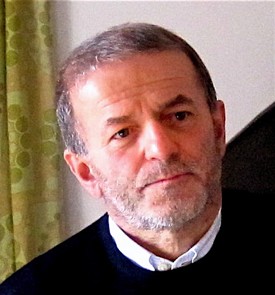
Vallini Giovanni
 giovanni.vallini@univr.it
giovanni.vallini@univr.it
 045 802 7098; studio dottorandi: 045 802 7095
045 802 7098; studio dottorandi: 045 802 7095
Study Plan
The Study Plan includes all modules, teaching and learning activities that each student will need to undertake during their time at the University.
Please select your Study Plan based on your enrollment year.
1° Year
| Modules | Credits | TAF | SSD |
|---|
2° Year activated in the A.Y. 2017/2018
| Modules | Credits | TAF | SSD |
|---|
3° Year activated in the A.Y. 2018/2019
| Modules | Credits | TAF | SSD |
|---|
| Modules | Credits | TAF | SSD |
|---|
| Modules | Credits | TAF | SSD |
|---|
| Modules | Credits | TAF | SSD |
|---|
Legend | Type of training activity (TTA)
TAF (Type of Educational Activity) All courses and activities are classified into different types of educational activities, indicated by a letter.
Physical Chemistry (2017/2018)
Teaching code
4S00097
Credits
6
Language
Italian
Scientific Disciplinary Sector (SSD)
CHIM/02 - PHYSICAL CHEMISTRY
The teaching is organized as follows:
teoria
laboratorio [1° turno]
laboratorio [2° turno]
Learning outcomes
The Course aim to provide the students with the basic tools for understanding and interpreting chemico-physical phenomena concerning systems of biological and biotechnological interest, also through the use of theoretical models. The student will acquire the ability to apply chemical-physical concepts to real processes in order to quantify observables, of thermodynamic, transport, kinetic and spectroscopic type.
Some numerical exercises on various physical-chemical aspects will be considered and solved in order to familiarize the student with the solution of real problems, in particular on the thermodynamic part.
The course also includes some laboratory experiences to provide manual skills and critical skills in dealing with real chemico-physical problems, as well as providing knowledge on modern methods and equipment for the measurement of thermodynamic variables, kinetic constants, colloidal properties as well as for studying electronic and vibrational properties of molecules.
Program
THEORY
Thermodynamics.
Recall to the concepts of heat and work. Heat capacity.
Internal energy, enthalpy and their variations with temperature.
Phase transition enthalpy. Standard enthalpy of reaction and its variations with temperature.
Entropy and its variations with temperature. Phase transition entropy. Overview on the statistical interpretation of entropy. Standard entropy of reaction.
Gibbs free energy and its variation with pressure and temperature. Stability condition and phase diagrams. Definition of chemical potential. Chemical potential of components of gas mixtures and ideal solutions.
Free energy of reaction and correlation with the reaction conditions. Conditions of equilibrium. Variation of the equilibrium constant with the temperature. Free energy of mixing for ideal fluids.
Measurement of thermodynamic observables for processes of biological interest.
Statistical thermodynamics: overview of the Boltzmann distribution, partition functions and their correlation with thermodynamic properties.
Chemical kinetics.
Recall to the rate laws, kinetic constants and Arrhenius equation. Transition states and activation energies.
Reaction schemes: approach to equilibrium and relaxation methods. Consecutive reactions. Calculation of rate laws from reaction mechanism. Rate Determining Step. Steady state approximation. Pre-equilibrium. Chemical reactions controlled by diffusion or activation. Kinetic control of a chemical reaction.
Molecular energy structure. Molecular spectroscopy.
Introduction to quantum theory. Particles in confined systems. Harmonic oscillator and vibrational modes. Energy levels and molecular orbitals for diatomic molecules. LCAO approximation. Overview of energy levels for polyatomic molecules.
Absorption spectroscopy in the UV and visible regions. Circular dichroism. Fluorescence and phosphorescence spectroscopy. Radiative and non-radiative transitions. Decay of excited states. Fluorescence quenching. Energy transfer among molecules and FRET.
Vibrational spectroscopy (infrared and Raman).
Nuclear Magnetic and Electron Spin Resonance spectroscopy (NMR and ESR).
Applications of the various spectroscopic techniques to organic molecules of biological interest.
Colloidal systems.
Colloidal dispersions and their stability. Examples of colloids of biological importance. Overview of nanocrystalline systems. Hydrodynamic radius and Zeta potential for colloids and their measurement with Dynamic Light Scattering (DLS) technique.
NUMERICAL EXERCISES
Exercises about the thermodynamic part.
LABORATORY EXPERIENCES
Experiences on:
- evaluation of the thermal capacity of a calorimeter and neutralization reaction enthalpy through calorimetric measurements;
- determination of the rate law with the isolation method for oxidation of iodine ion with hydrogen peroxide;
- study of spectroscopic transitions of fluorescine in the visible region through measurement and analysis of absorption and fluorescence spectra; fluorescence quenching of fluorescein with iodide ion; investigation on the quenching mechanism;
- study on the vibrational properties of simple organic molecules by analysis of infrared and Raman spectra; interpretation of NMR spectra for simple organic molecules; measurements of hydrodynamic radius and Zeta potential for nanocrystalline systems.
Bibliography
| Activity | Author | Title | Publishing house | Year | ISBN | Notes |
|---|---|---|---|---|---|---|
| teoria | Peter Atkins, Julio de Paula | Elementi di Chimica Fisica (Edizione 4) | Zanichelli | 2018 | 9788808220684 | |
| teoria | Peter Atkins, Julio de Paula | Physical Chemistry for the Life Sciences (Edizione 2) | Oxford University Press | 2011 | 9780199564286 | |
| laboratorio | Speghini Adolfo | Dispense per esercitazioni di laboratorio di Chimica Fisica (Edizione 1) | 2019 |
Examination Methods
The exam consists of a written test, including exercises on the thermodynamic part and questions on the entire program of the Course, aimed at ascertaining the student's knowledge about the contents of the course. Particular attention will be paid to the main concepts of Chemical-Physics, the correct resolution of numerical exercises and the knowledge of the methods, tools and techniques used in laboratory experiences..
For both attending and not attending students the exam will cover all the topics discussed both in the theoretical part and in that of the numerical exercises and laboratory experiences.
For the part of the laboratory a written report is required about the methods and the results obtained during the laboratory experiences.
Type D and Type F activities
Modules not yet included
Career prospects
Module/Programme news
News for students
There you will find information, resources and services useful during your time at the University (Student’s exam record, your study plan on ESSE3, Distance Learning courses, university email account, office forms, administrative procedures, etc.). You can log into MyUnivr with your GIA login details: only in this way will you be able to receive notification of all the notices from your teachers and your secretariat via email and soon also via the Univr app.
Graduation
List of theses and work experience proposals
| theses proposals | Research area |
|---|---|
| Studio delle proprietà di luminescenza di lantanidi in matrici proteiche | Synthetic Chemistry and Materials: Materials synthesis, structure-properties relations, functional and advanced materials, molecular architecture, organic chemistry - Colloid chemistry |
| Multifunctional organic-inorganic hybrid nanomaterials for applications in Biotechnology and Green Chemistry | Synthetic Chemistry and Materials: Materials synthesis, structure-properties relations, functional and advanced materials, molecular architecture, organic chemistry - New materials: oxides, alloys, composite, organic-inorganic hybrid, nanoparticles |
| Dinamiche della metilazione del DNA e loro contributo durante il processo di maturazione della bacca di vite. | Various topics |
| Risposte trascrittomiche a sollecitazioni ambientali in vite | Various topics |
| Studio delle basi genomico-funzionali del processo di embriogenesi somatica in vite | Various topics |
Attendance
As stated in the Teaching Regulations for the A.Y. 2022/2023, attendance is not mandatory. However, professors may require students to attend lectures for a minimum of hours in order to be able to take the module exam, in which case the methods that will be used to check attendance will be explained at the beginning of the module.

